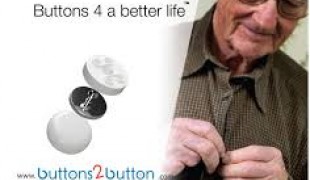- 7010
- 369
- 6
- 3
- 1
- Help Ukraine
About the solution
Jake started wearing braces and was reminded of the importance of brushing his teeth. The boy then thought about people who have poor grip and, because of that, have trouble brushing their teeth properly.
“I started to think about people who couldn’t brush and what I could do to help them. People with Parkinson’s and other diseases. The No. 1 condition that makes it difficult is arthritis, and I thought about my grandma Zell, who recently passed away but who had really bad arthritis”, the inventor explained.
Inspired by all of this, Jake set out to come up with a way to help these people and started doing his research, to see what already existed.
The first task was to build a toothbrush handle that could be easily used by people with physical disabilities or weak grip. “What he came up with was filling a balloon with coffee grounds. Because coffee grounds have jagged little edges, they tend to interconnect and hold their shape once you create a vacuum in the balloon. It was pretty ingenious”, Jake’s father said.
The next step was to find a way to get the toothpaste out of the tube and onto the brush (Jake’s grandmother complained about this task). Using Legos and a programmable controller, the boy created “the squeezer”. This consists of a mechanism that works by pushing a button that starts a motor-driven device that squeezes a predetermined amount of toothpaste onto a toothbrush mounted underneath.
Once the projected was finished, alongside with a 120-page journal documentation of the whole process, the student showed the device to his orthodontist. “He looked at it, and he was impressed by it. He even suggested that it would help people I hadn’t thought of – people who have broken bones in their hand and can’t grip the tube”, he expressed.
Jake’s solution won the state’s Grand Champions trophy and, for the second straight year, earned Jake a trip to the national championship.
Adapted from: https://bit.ly/2IEA5fD
This solution shall not include mention to the use of drugs, chemicals or biologicals (including food); invasive devices; offensive, commercial or inherently dangerous content. This solution was not medically validated. Proceed with caution! If you have any doubts, please consult with a health professional.
DISCLAIMER: This story was written by someone who is not the author of the solution, therefore please be advised that, although it was written with the utmost respect for the innovation and the innovator, there can be some incorrect statements. If you find any errors please contact the patient Innovation team via info@patient-innovation.com
-
-
348
-
0
-
6673

Son created a key turning aid to avoid wrist twisting motion
Grip
CAREGIVING
Arthritis
Assistive Daily Life Device (to help ADL)
Restoring mobility
Managing pain
Promoting self-management
Managing Neurological Disorders
Preventing (Vaccination, Protection, Falls, Research/Mapping)
Raise awareness
Caregiving Support
General and Family Medicine
Orthopedics
Rheumatology
United States
-
-
-
283
-
6
-
5553

Woman creates magnetic buttons to help stepfather who has Parkinson's disease get dressed
(SELF)-CARE: DRESSING: Dressing independently.
Grip
CAREGIVING
Parkinson's Disease
Multiple Sclerosis
Bone Disorders (Decalcification, Bone Deformity, Bone Fracture, Bone Infection)
diabetes type 2
Assistive Daily Life Device (to help ADL)
Body-Worn solutions (Clothing, accessories, shoes, sensors...)
Muscle weakness
Tremors
Difficulty coordinating movements
Stiffness or rigidity (difficulty moving)
Limited range of motion
Muscle pain or stiffness
Loss of balance
Reduced grip force (grip)
Trouble with fine motor skills (e.g., writing, buttoning clothes)
Loss of muscle coordination
Muscle cramps or spasms
Joint deformity
Muscle twitching
Numbness or tingling in the extremities
Joint pain or swelling
Promoting self-management
Managing Neurological Disorders
Promoting inclusivity and social integration
Caregiving Support
Endocrinology
Neurology
Orthopedics
Rheumatology
United States
-
-
-
453
-
0
-
7061

Girl creates special towel to help her aunt and people with physical disabilities
Grip
(SELF)-CARE: HYGIENE: Maintaining personal hygiene
Arthritis
Rheumatoid Arthritis
Reactive Arthritis
Polyarthritis
Mobility impairments
Assistive Daily Life Device (to help ADL)
Difficulty walking or moving
Muscle weakness
Limited range of motion
Muscle pain or stiffness
Reduced grip force (grip)
Loss of muscle coordination
Joint deformity
Joint redness or warmth
Swelling or inflammation
Fatigue
Muscle aches or weakness
Joint pain or swelling
Managing pain
Promoting self-management
Caregiving Support
General and Family Medicine
Orthopedics
Rheumatology
United States
-
 en
en
niamhmatt21 • Sat, 09/07/2019 - 00:37
Well done Jake. Its really an innovative and helpful device and will surely help many people in order to have a grip on the brush while brushing their teeth. resumewritinggroup also provides innovative ideas related to your daily routine.